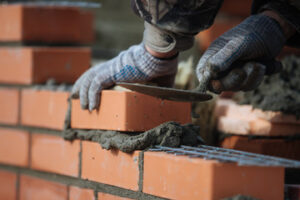Deck Cleaning Charleston SC is a task that should be completed regularly to help extend the life of your outdoor space. It helps to eliminate mold, mildew, and other fungi that can lead to serious wood problems such as rot.

Start by removing all furniture and other items from the deck. Sweep the deck thoroughly to remove large chunks of dirt, cigarette butts, leaves, and other debris.
You can use a scrub brush and garden hose to clean your deck, but you will get much better results with a power washer. Power washing is a quick way to blast away dirt, debris, mildew, and algae, and it also gets into tight spaces that are difficult to reach by hand. This method is especially effective if you plan on staining your deck, as it ensures that the stain will adhere and soak into the wood properly.
The first step is to prepare the surface for cleaning by sweeping it and using a soft brush to get rid of any stuck-on debris. Next, mix your cleaner according to the instructions on the label. Generally, you should start with a higher pressure setting and work your way down to the lowest. It is important to test the spray nozzle on a hidden area of your deck before starting to make sure that it will not damage the wood. A wide nozzle is typically best for this task, as it can be used to wash a large area without damaging the surface.
Be careful when using a power washer because the hot water could damage or weaken the structure of your deck. If you notice that any areas of your deck are showing signs of damage, such as warping or cracking, it is important to repair them before you begin the cleaning process. If you do not repair these problems, they will only get worse over time and may result in a collapsed or unsafe deck.
If you are not comfortable using a power washer, you can always hire a professional to do the job for you. However, it is important to find a company that uses risk-free techniques and asks detailed questions about the type of deck you have. Too many companies treat every deck the same, which often leads to cheaper costs on the front end but expensive repairs later. To avoid this problem, be sure to choose a professional that is experienced in cleaning Trex and wood decks. It is recommended to have your deck power washed on a semi-annual basis (spring and autumn), or as needed to keep it looking its best.
Dish Soap
If you want to clean your deck without using a power washer, there are plenty of safe DIY cleaning solutions that will get the job done. First, sweep the surface of the deck and remove any debris that has accumulated on the wood. You can use a broom or a specialized deck scrub brush for this purpose. It’s also a good idea to move furniture, plants, grills, and other equipment that may be in the way while you’re working.
Vinegar is an all-natural cleaner and deodorizer that will remove dirt and grime from the surface of the deck. It’s not recommended, however, for use with stained decking as it will leach the color out of the wood. A diluted mixture of vinegar and baking soda will kill mold, however, and can be used to wipe down the wood surface after sweeping.
A basic mixture of warm water and detergent is another effective homemade deck cleaner. Powdered laundry detergent, such as Borax, is a great option as it serves as a cleanser and an abrasive and can be mixed with bleach to fight grease stains on deck surfaces. It is important to wear rubber gloves when mixing and applying this solution as it can cause skin irritation. You should also avoid mixing ammonia-based ingredients with bleach as this creates toxic chloramine gas that can irritate the eyes, nose, mouth and respiratory system.
To make this deck cleaning solution, fill a one-gallon bucket with warm water and add 2 cups of powdered oxygen bleach (such as OxiClean, found in the laundry aisle at your local grocery store). Stir this solution gently until all the oxygen bleach is completely dissolved. Then add 1/4 cup of liquid dish soap and stir to distribute it throughout the solution. This solution will effectively clean your deck and kill mildew, algae and moss, while preventing the growth of wasp nests and keeping yellow jackets away. As an added bonus, this solution is environmentally friendly and won’t damage garden greenery if accidentally splashed onto nearby plants. It is also gentle enough to be used as a yearly maintenance treatment in between more intense scrubbings.
Oxygen Bleach
A deck cleaner containing oxygen bleach will kill mildew and residue on your deck without damaging the wood. These cleaners are also non-toxic for plants and people, unlike chlorine bleach. However, since they are still bleach cleaners you will want to wear protective gear like gloves and goggles. You will also want to saturate your deck and water any plants before using the cleaner so it does not wash away or burn them. You will also need to scrub the deck with a long handled stiff bristled brush for this type of cleaning. Before you start washing your entire deck, test the cleaner on a small area of the deck. If the solution works well, it should kill the mildew and dissolve the dirt within 15 minutes.
To clean your deck with a DIY oxygen bleach solution, mix one tablespoon of powder with a cup of water. Apply the solution to a scrub brush and use it to rub away mold or mildew stains on your deck. After you’ve finished scrubbing, rinse the deck with a garden hose and allow it to dry completely before applying additional treatments.
Another option for a DIY deck cleaner is sodium percarbonate, commonly known as OxiClean. This product comes in a powder form that you stir into a bucket of warm water. It will release oxygen ions that attack the molecules of stain and dirt, blasting them apart. It is less effective than chlorine bleach at removing sun damaged grey fibers, but it will work if you’re willing to put in some extra elbow grease and soak the deck for longer periods of time.
Vinegar is another simple and natural solution to clean a deck. It is safe for composite and wood decking, and it will not damage the wood or leave behind harsh chemicals. You can use vinegar to kill mildew and remove mildew stains from your deck. This homemade deck cleaner is easy to make and requires only a few ingredients that you probably already have in your home.
OxyClean
If you’re concerned about the environment and prefer to use a non-toxic cleaner on your deck, try an oxygen bleach like OxyClean. Unlike chlorine bleach, which has the potential to poison plants and pollute natural waterways, OxyClean dissolves in water, leaving behind nothing more than oxygen and sodium carbonate (sodium percarbonate). It also works well for a wide variety of stains and spills. Mix your cleaning solution with warm water and scrub it into a damp surface with your brush or sponge. The bubbling action loosens stain molecules from the fibers of your deck, making it easier for you to rinse away the dirt and grime.
Make sure your deck is empty of chairs, grills, and other equipment before starting your cleanup. If you’re working on a large area, you may want to divide it into sections and work one section at a time. This helps prevent the buildup of soap scum and hard-water deposits between cleanings.
Rinse the deck thoroughly with a garden hose to remove as much loose debris as possible. This will help the clean-up process go more quickly and leave you with a fresher-looking deck.
Pour or spray your deck cleaner over a small test area of your deck to confirm that it is safe for your wood. You can purchase a deck cleaning kit that will include a sample of your chosen cleaner. Follow the manufacturer’s instructions for applying and rinsing the product, which is typically left to sit on your deck for 10-15 minutes before being rinsed off.
Once the deck is completely dry, you can apply a penetrating sealer. This will protect it from harsh UV rays, wet/dry cycles, and temperature variations that can shorten its useful life.
Although composite decking requires less maintenance than wood, you should still clean and reseal it once or twice a year to keep it looking fresh. Be sure to apply a good quality penetrating sealer that is appropriate for your type of deck.


